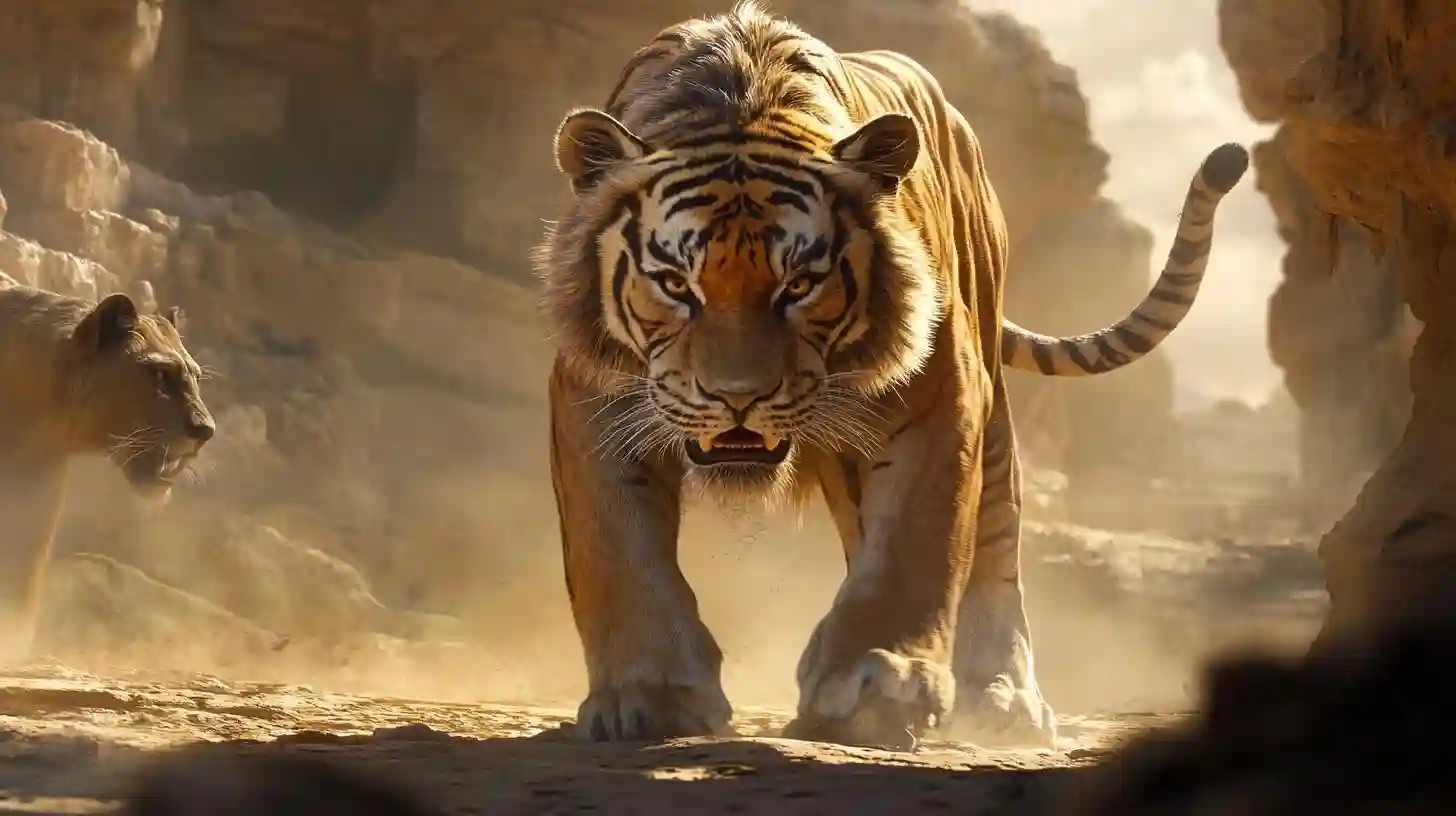
The debate over whether tigers are more ferocious and powerful than lions has intrigued wildlife enthusiasts, researchers, and the general public for decades. Both animals command immense respect and admiration due to their prowess as apex predators in their respective habitats. However, their physical attributes, hunting strategies, and social structures introduce complexities into the conversation.
Tigers, particularly the Bengal variety, are larger than most lions, boasting a muscular build that gives them an edge in strength. A tiger’s body is equipped for stealth and power, with elongated limbs perfect for sprinting short distances to ambush prey. Their distinctive striped fur provides effective camouflage in the dense jungles they inhabit, allowing them to stalk prey with remarkable cunning. This solitary nature makes them more self-reliant hunters, capable of taking down large herbivores like deer and wild boar alone.
On the other hand, lions are known for their social structure. Living in prides, lions demonstrate a unique approach to hunting. Their cooperative strategies allow them to take down larger prey, sometimes even buffalo or giraffes, by working together in teams. Lionesses typically do the majority of the hunting, showcasing their agility and teamwork, while males are tasked with protection and displaying strength to ward off intruders or rivals. The social dynamics among prides can influence hunting success and territorial control.
When it comes to ferocity, tigers may have the upper hand in one-on-one confrontations. Their solitary lifestyle means they often rely on stealth and unpredictability, which can be seen as a more aggressive hunting style. Tigers are known to be fiercely protective of their territory and can be territorial to the point of lethal confrontations with other tigers vying for dominance. The individualistic nature of tigers can lead to a perception of them as more powerful or ferocious because they operate alone in claiming and defending their space.
In contrast, lions exhibit a different kind of power that comes from their social structure. Male lions, for example, can weigh significantly more than their female counterparts and often display brute strength in defensive situations. Their role is often more about maintaining the pride’s territory rather than hunting; however, they can unleash fierce aggression when challenged. The roars of a lion can be heard for miles and serve as a powerful reminder of their dominance in the wild. Their loud communications are not only for asserting control but also for maintaining social bonds within the pride.
An analysis of their hunting techniques also underscores the differences between these big cats. Tigers typically employ an ambush technique that relies on stealth to get as close to their prey as possible before launching an explosive attack. This strategy showcases their muscular strength and agility, allowing them to pounce on prey quickly before it has a chance to escape. In contrast, lions often hunt by endurance, chasing prey over distances with the sheer power of their coordinated attacks. The social aspect of lion hunting allows them to exhaust prey, demonstrating a different type of power that correlates more with teamwork than individual ferocity.
Other aspects, such as habitat, play a crucial role in shaping the lives of these magnificent beasts. Tigers mainly inhabit forests and grasslands in Asia, while lions have become emblematic of the African savanna. The difference in their environments influences their behavior, adaptations, and interactions within their ecosystems. Tigers navigate through dense undergrowth, relying on agility and camouflage, while lions must traverse open landscapes where visibility plays a significant role in hunting strategies and pride dynamics.
When drawing comparisons between lions and tigers, it becomes evident that ferocity and power manifest in different ways. Tigers are solitary hunters, relying on their strength and stealth, while lions demonstrate their power through social collaboration and territorial defense. Each animal showcases a unique set of strengths that reflect their evolutionary paths, making it difficult to categorically state that one is more ferocious or powerful than the other. Researchers and experts continue to study these magnificent creatures, revealing new insights into their behaviors, lives, and the roles they play within the broader tapestry of the animal kingdom. Understanding these complexities can deepen our appreciation for both species and the ecosystems they inhabit, reminding us of the intricate balance of nature and the magnificence of wildlife.